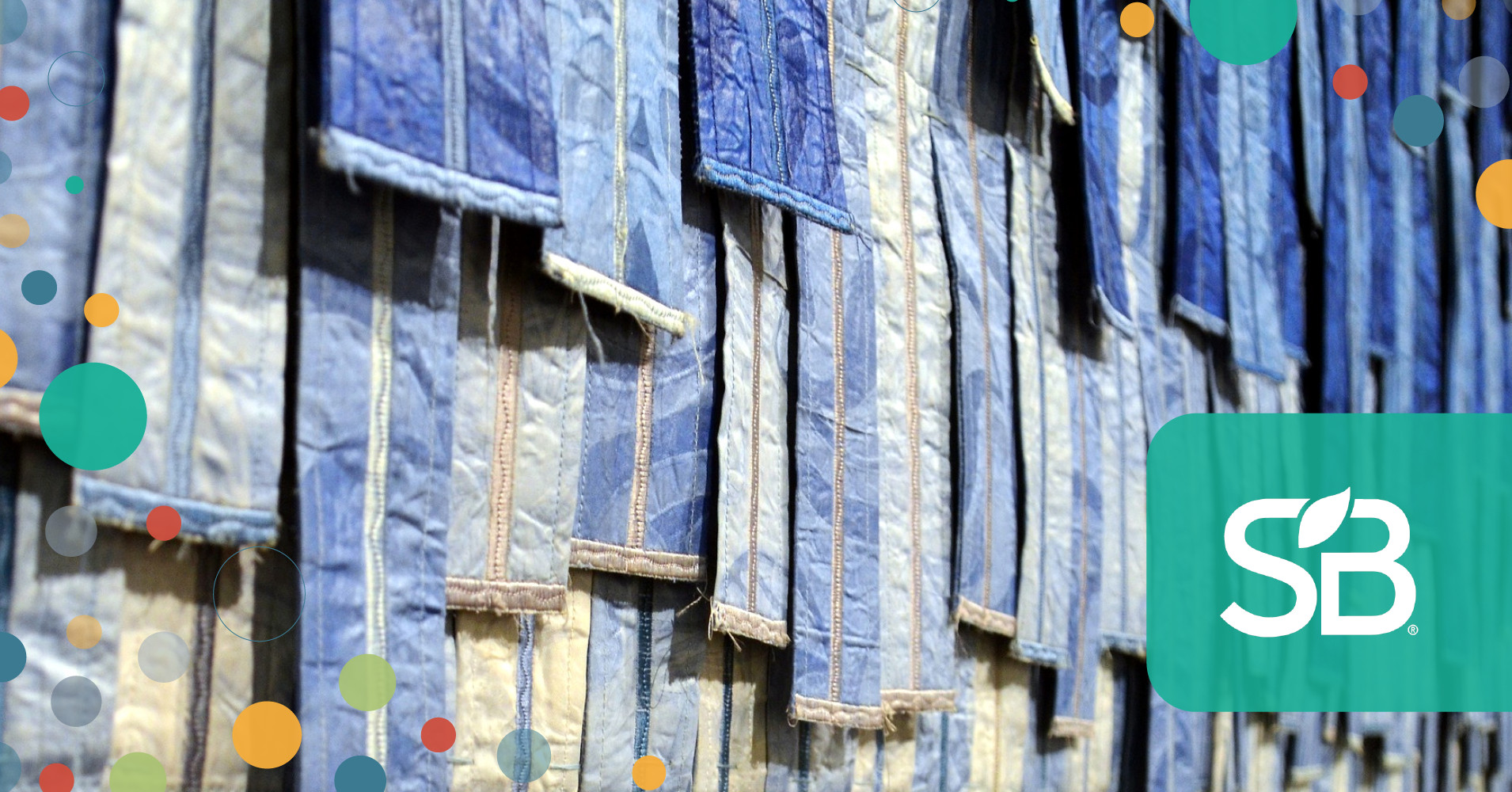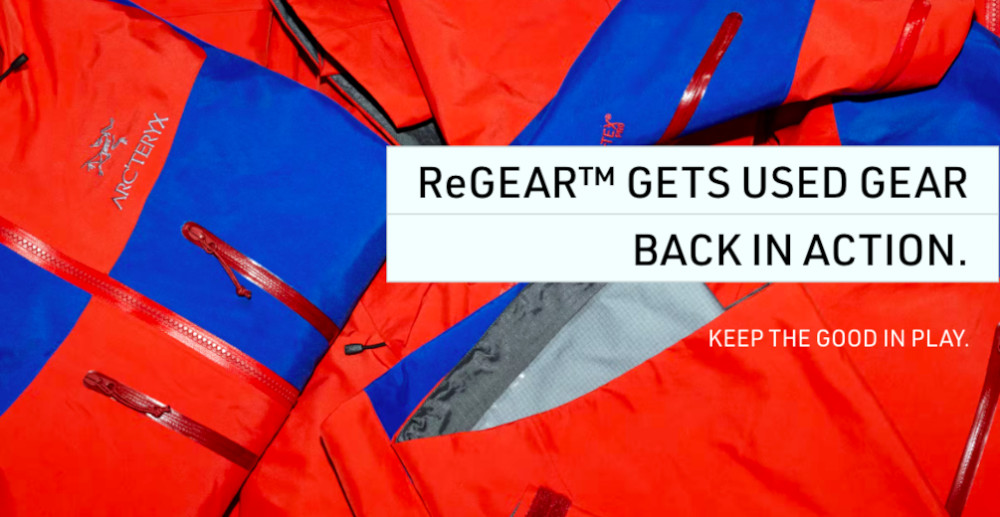Fashion
New Collaborations Lay Further Groundwork for Circular Fashion Economy | Sustainable Brands

A new report from Fashion for Good’s Sorting for Circularity maps pathway to
scaling fiber-to-fiber recycling within the US, while brands joining the Ellen
MacArthur Foundation’s Fashion Remodel initiative explore ways to make money
without making new clothes.
Report: $1.5B opportunity for sorting for fiber-to-fiber recycling in the US
Image credit: Cottonbro
Studio
On Wednesday, Fashion for Good launched its
Sorting for Circularity USA report — a first-of-its-kind report that delves into consumer disposal behavior, textile-waste composition, and the
potential for scaling fiber-to-fiber recycling within the US. It provides crucial
insights for making informed decisions for further investments, infrastructure
development and the next steps towards circularity.
Understanding the US textile-waste landscape
The United States is a global leader in both textile consumption and waste
generation, which positions it as one of the largest sources of secondary raw
materials for post-consumer textile feedstock. Despite this, only 15 percent of
the textile waste generated in the US is currently recovered — with 85
percent
ending up in landfills or incinerators.
With impending policies in the European
Union
and certain US
states
— alongside commitments from both the public and private sectors to promote
fiber-to-fiber
recycling
— there is a growing demand for infrastructure related to post-consumer textile
collection, sorting and recycling; and Sorting for Circularity USA has set out
to identify current gaps and opportunities to fill them.
“The Sorting for Circularity USA Project addresses a key challenge in the
textile industry: transforming textile waste into a valuable resource,” said
Fashion for Good Managing Director Katrin
Ley. “This project investigates
the connection between consumer behavior, waste generation, and available
recycling technologies. The goal is to establish a system where all textiles are
utilized effectively, minimizing waste.”
Launched in January 2023 by Fashion for Good and Resource Recycling
Systems (RRS), Sorting for Circularity USA aims to
provide crucial insights for strategic decision-making to advance circularity in
the fashion value chain.
The project brings together Fashion for Good brand partners adidas,
Inditex, Levi Strauss &
Co
and Target; external partners
Eastman,
H&M
Group,
lululemon, the New York State Center for Sustainable Materials Management (NYS
CSMM) and Nordstrom; and key project
implementation partners including the Secondary Materials and Recycled
Textiles (SMART) Association, Goodwill Industries International,
Helpsy and United Southern Waste.
The Sorting for Circularity framework, introduced by Fashion for Good together
with Circle Economy in 2021, forms the basis
for the project, utilizing Matoha’s Near Infrared (NIR)
technology to assess
textile-waste composition and identify the potential for fiber-to-fiber recycling.
Addressing data gaps
In the pursuit of establishing a functional reverse supply chain and the
necessary infrastructure, the report identified two critical areas that lack
data — consumer disposal behavior and material characteristics of post-consumer
textiles. The Sorting for Circularity USA project addressed these gaps through a
comprehensive, national consumer survey and waste-composition analysis.
The survey of 1,200 US adults revealed that 60 percent of respondents divert
textiles (through donation,
resale
or passing on to family or friends) while 4 percent discard them — driven
primarily by factors such as condition and fit, as well as lack of confidence in
knowing what is accepted for donation/reuse/recycling and skepticism as to
whether textiles are actually reused or recycled. On the other hand, the
waste-composition analysis unveiled that over 56 percent of post-consumer
textiles are suitable for fiber-to-fiber
recycling
— with cotton and
polyester
being the most prevalent fiber types — indicating a substantial potential for
these textiles to be used as feedstock for mechanical- and chemical-recycling
processes.
“This research provides defensible insight into two parts of the recovery value
chain with little to no existing data: firstly, how consumers decide what to do
with textiles they no longer want; and secondly, the fiber composition of
post-consumer textiles,” said Marisa
Adler, Senior Consultant at RRS.
“With these new findings, we can enhance collection systems to capture more
textiles; calculate the financial potential for textile recycling; and build
supportive, data-driven policy. We are eager to continue building upon this
research to advance further opportunities for textile circularity.”
The path to a circular textiles future
The project revealed a $1.5 billion opportunity for fiber-to-fiber
recycling
by redirecting non-rewearable textiles from landfills and incinerators to
recycling streams. The report outlines growth strategies for the US
textile-recycling industry — emphasizing enhanced financial value through
efficiency improvements, increased commodity valuation, and policy mechanisms such
as extended producer responsibility
(EPR)
schemes. Collaboration among stakeholders — including brands, government,
retailers, consumers, collectors, sorters, recyclers and financial institutions —
is crucial to promote circularity, invest in research and development, and
advocate for supportive policies and incentives to drive technological
innovation. This redirection of textiles towards recycling underscores the
substantial economic potential of embracing circularity in textiles.
Fashion for Good says there is an opportunity to build on these insights and assess the feasibility of
different sorting business models and (semi) automated sorting technologies to
create a demo facility suitable for closed-loop textile recycling. Ultimately,
evaluating the commercial and technical feasibility of a semi-automated sorting
process and identifying investment opportunities to scale solutions nationwide.
Apparel brands set out to give fashion a circular ‘remodel’

Image credit: Arc’Teryx
Meanwhile, on Tuesday, some of the world’s leading fashion brands signed on to
the Ellen MacArthur Foundation (EMF)’s The Fashion
ReModel
initiative — to explore ways to make money without making new clothes.
Launched at the Global Fashion Summit in
Copenhagen, The Fashion Remodel unites a group of industry frontrunners from
across high-street and high-end names, as well as other industry players, to
make circular business models the norm.
Arc’teryx,
ARKET, COS, H&M Group, Primark, Reformation, WEEKDAY and
Zalando are among the first participants in the project — which will
identify solutions and opportunities to begin decoupling revenue from the
production of new garments, advancing the long-term goal of making a circular
economy for fashion a reality.
“We’re looking forward to working with the Ellen MacArthur Foundation again,”
said Leyla Ertur,
Head of Sustainability at H&M Group. “The opportunity presented by decoupling
the fashion industry’s growth from resource use is huge and this project can
help us better understand how to further scale these models.”
Despite continually rising consumer engagement in more conscious consumption and
efforts such as Fashion for Good’s to scale textile recycling, the fashion
industry still largely operates on a take-make-waste model — creating millions
of tonnes of clothing that are produced, worn and discarded every year.
Circular business models such as rental, resale, repair and remaking are
designed to keep products in use. A recent EMF study estimated that it could
claim 23 percent of the global fashion market by
2030,
representing a US$700 billion opportunity to transform the future of fashion.
The Ellen MacArthur Foundation hopes that The Fashion Remodel will provide the
starting point to transform how business is done with the support of
policymakers in fashion.
“Through their participation in The Fashion ReModel, this group of organizations
are taking the next step on the road towards a circular economy for fashion,”
said EMF Fashion Lead Jules
Lennon. “In order to
challenge conventional, linear models and create a new normal, brands must
decouple revenue from production by accelerating efforts to redesign the
products of the future, as well as rethinking the services and business models
which deliver them to customers and keep them in use.
“The fashion industry is rooted in reinvention; and we welcome business-led
action towards a world where, instead of being worn once and discarded, clothes
can be used many more times and threaded through the lives of more people.”
The Foundation believes that the shared learnings and experiences from The
Fashion Remodel will forge the path towards a more resilient fashion industry.
It follows EMF’s Jeans
Redesign project,
which ran from 2019-2023 and tasked participants to reimagine the wardrobe
staple to be fit for a circular economy. Insights from the project showed that
building on the redesign of products, more action was needed to transform the
systems those products enter and the infrastructure that delivers and keeps them
in use.
“Arc’teryx is committed to a circular future, building products to last and equipping our guests with the tools and education to keep their gear in play,” said Dominique Showers, VP of ReBIRD at Arc’teryx. “We’re excited to be one of the first participants to join the Ellen MacArthur Foundation’s demonstration project, The Fashion ReModel, to reimagine circularity for the outdoor industry — rethinking the way we approach design and waste to build a future in which everything we create can be given a second life.”







:max_bytes(150000):strip_icc()/roundup-writereditor-loved-deals-tout-f5de51f85de145b2b1eb99cdb7b6cb84.jpg)


